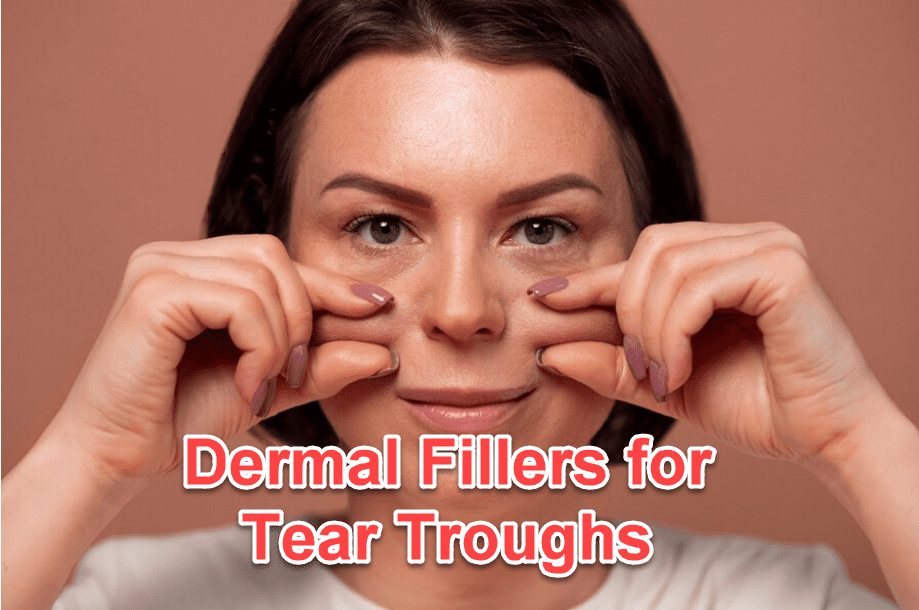

Dermal fillers have surged in popularity in recent years as a minimally invasive way to smooth wrinkles and add volume to the face. Age brings about a loss of collagen and elastin in our skin, leading to sagging skin, wrinkles, and hollowness under the eyes and cheeks.
Dermal fillers can temporarily restore a more youthful appearance by filling in lines and wrinkles and plumping up areas that have lost volume.
According to the American Academy of Plastic Surgeons, dermal filler usage has increased 274% since 2000.
What Exactly Are Dermal Fillers?
Dermal fillers are gel-like substances made from hyaluronic acid or other ingredients that are injected under the skin to fill wrinkles, lines, and depleted areas instantly.
Our body contains hyaluronic acid as a natural constituent and binds to water to plump the skin. Synthetic filler versions can last from 6 months to 2 years. Other fillers use calcium hydroxyapatite, a mineral that stimulates collagen production for longer-lasting effects.
Dermal fillers differ from muscle relaxants like Botox, which relax muscles to smooth out wrinkles caused by facial expressions. Fillers add volume rather than paralyze muscles. They can be used alone or combined with Botox for a complete facial rejuvenation regimen.
What Areas Can Be Treated With Fillers?
Dermal fillers can be applied to numerous facial zones to mitigate the signs of aging. Common treatment areas include:
- Nasolabial folds (lines from nose to mouth)
- Marionette lines (lines from mouth to chin)
- Smile lines or crow’s feet
- Cheeks to restore lost volume
- Tear troughs under the eyes
- Frown lines between eyebrows
- Lips to add fullness
- Chin to sharpen jawline
Hands can also be rejuvenated with fillers to reduce prominent veins and tendons and restore volume loss that causes a skeletal appearance.
What Fillers Are Made Of
The main ingredients used to create dermal fillers include:
Hyaluronic Acid: Naturally present in the body, it contributes to the skin’s moisture and fullness. Brand names like Juvederm and Restylane use cross-linked hyaluronic acid modified for longer-lasting results.
Calcium Hydroxyapatite (CaHA): A mineral compound also found in bones that stimulates collagen growth. Common brand names are Radiesse and Radiance.
Poly-L-Lactic Acid (PLLA): A biodegradable synthetic substance that promotes natural collagen production. Sculptra Aesthetic contains PLLA.
Polymethylmethacrylate (PMMA): Tiny plastic microspheres suspended in collagen gel to provide support under wrinkles. Common brand names are Artefill, Bellafill, and Metacrill.
Other fillers use substances like polyalkylimide and carboxymethylcellulose combined with other ingredients. Most dermal fillers utilize some form of hyaluronic acid or similar compounds. However, other substances can offer longer-lasting results.
Benefits of Dermal Fillers
There are many excellent reasons to consider facial fillers, such as:
- Instantly fill wrinkles and lines for six months up to 2 years
- Add lost volume back to hollow cheeks, temples, chin, etc
- Plump up thinning lips
- Lift and contour sagging areas for a refreshed look
- Requires no surgery or downtime for most people
- Combine with laser skin treatments for optimal rejuvenation
- Improved self-esteem and confidence
Things to Consider Before Treatment
As with any cosmetic treatment, there are some important things to think about beforehand if you are considering dermal fillers:
- Results are temporary, so maintenance injections are needed
- Multiple syringes may be required per treatment
- Bruising, redness, and swelling can occur temporarily
- Avoid alcohol and blood thinners several days before/after
- Let the provider know about any medications or health conditions
- Choose an experienced, licensed provider
- Set realistic expectations about results
What to Expect During the Procedure
One of the key attractions of dermal fillers is the non-invasive method used in these treatments. Appointments usually take less than an hour and require little to no downtime. Here is what you can generally expect:
- Numbing cream is applied 20-30 minutes prior to injections
- Ice packs are also used for comfort during treatments
- The doctor will discuss areas to be treated and the desired results
- Thin needles are used to inject small amounts of gel under the skin
- Multiple injections are administered depending on the number of areas treated
- Minimal discomfort during the procedure for most patients
- Immediate visible improvements to treated areas
- Possible mild side effects like bruising, swelling, redness
Recovery Time
While results from dermal fillers are instant, there is some short-term recovery to expect:
- Swelling and redness common for 1-2 days
- Temporary bruising and tenderness may last one week
- Avoid touching or massaging treated areas for 24 hours
- Avoid exercise, alcohol, and blood thinners for several days
- Sleep face-up and on your back to minimize swelling
- Use cool compresses to reduce swelling
- Take OTC pain meds as needed for discomfort
Maintenance
One downside of dermal fillers is that results will gradually fade. How long they last depends on the filler brand and treatment area. Typically, touch-ups are needed:
- Every 6-12 months for hyaluronic acid formulas
- Once a year or longer for calcium hydroxyapatite
- Every 1-2 years for PLLA or PMMA fillers
Scheduling maintenance before fillers completely dissipate helps prolong results. Combining laser treatments, microdermabrasion, or skin care products can also help sustain improvements between appointments.
Choosing an Experienced Provider
With the rising popularity of injectables, it’s important to do some homework before choosing a provider. Check that your doctor or med spa professional:
- Is fully licensed and certified
- Has extensive training with dermal fillers
- Uses FDA-approved products
- Is experienced in injecting desired areas
- Provides before and after photos of real patients
- Has reviews showing satisfactory results
- Explains products, procedures, and pricing upfront
An experienced cosmetic provider like Dr. Nawrocki will also evaluate your facial structure, skin quality, and concerns to recommend an appropriate, customized filler treatment plan. With their specialized expertise and patient-centered care, Green Relief Health is an excellent option to consider for your cosmetic needs.
Takeaway
Dermal fillers offer an effective way to take years off your face without surgery or significant downtime. They can address multiple signs of facial aging, from fine lines around the mouth and eyes to volume loss in the cheeks and lips.
With a skilled provider, customized dermal filler injections can help patients look refreshed and well-rested. Consider scheduling a consultation to find out if you’re a good candidate for this popular facial rejuvenation option.






